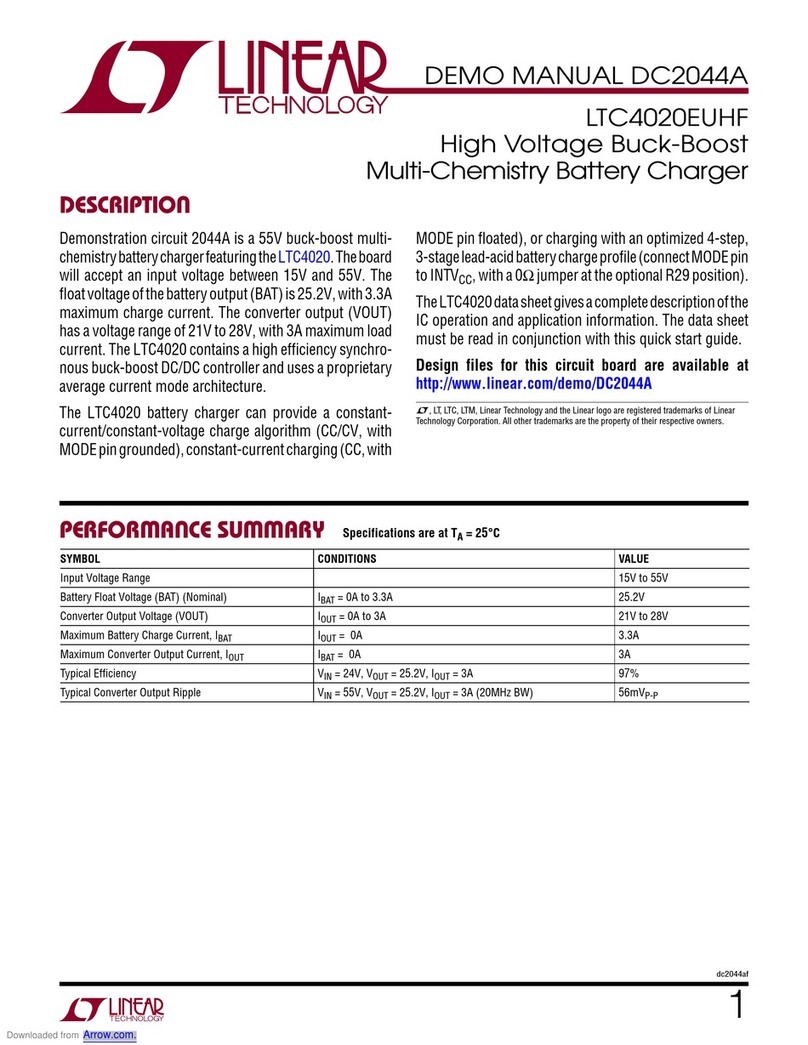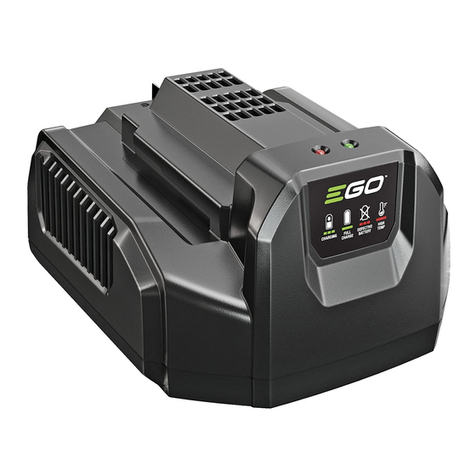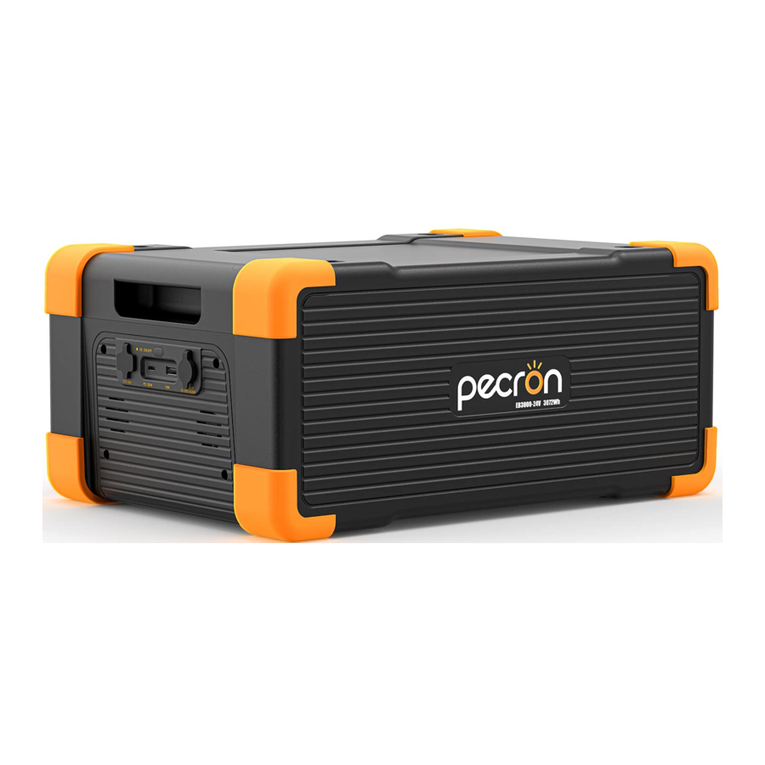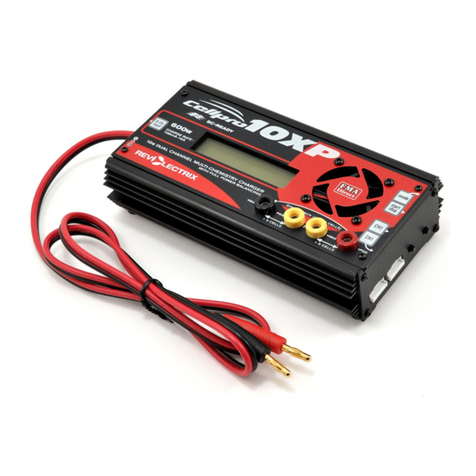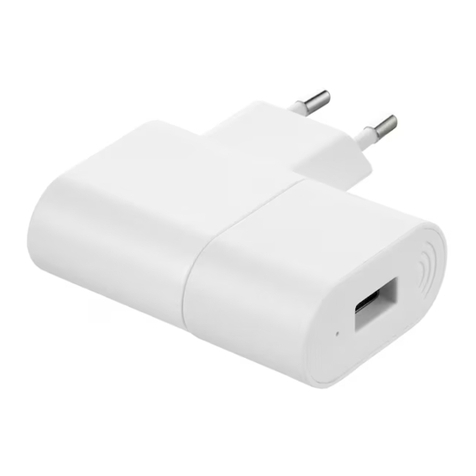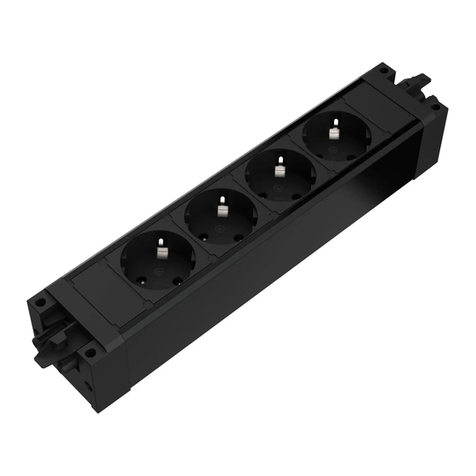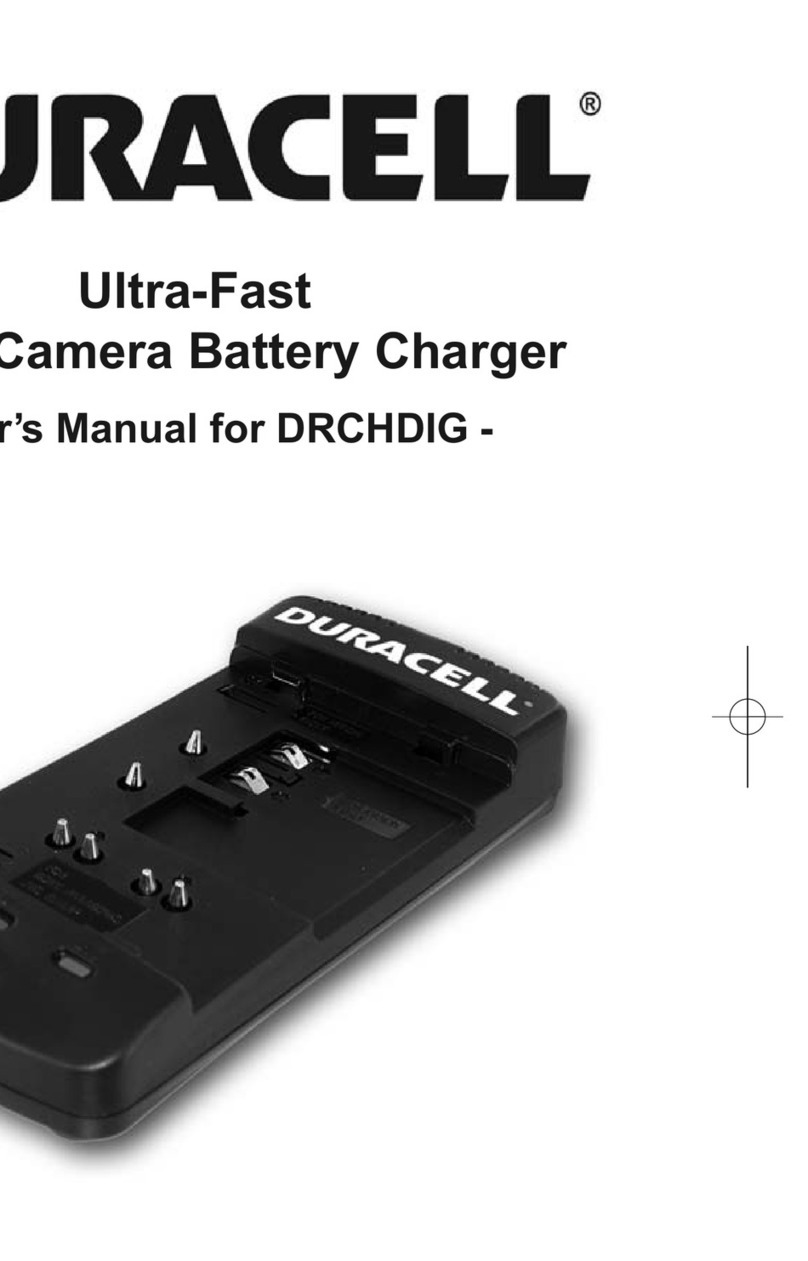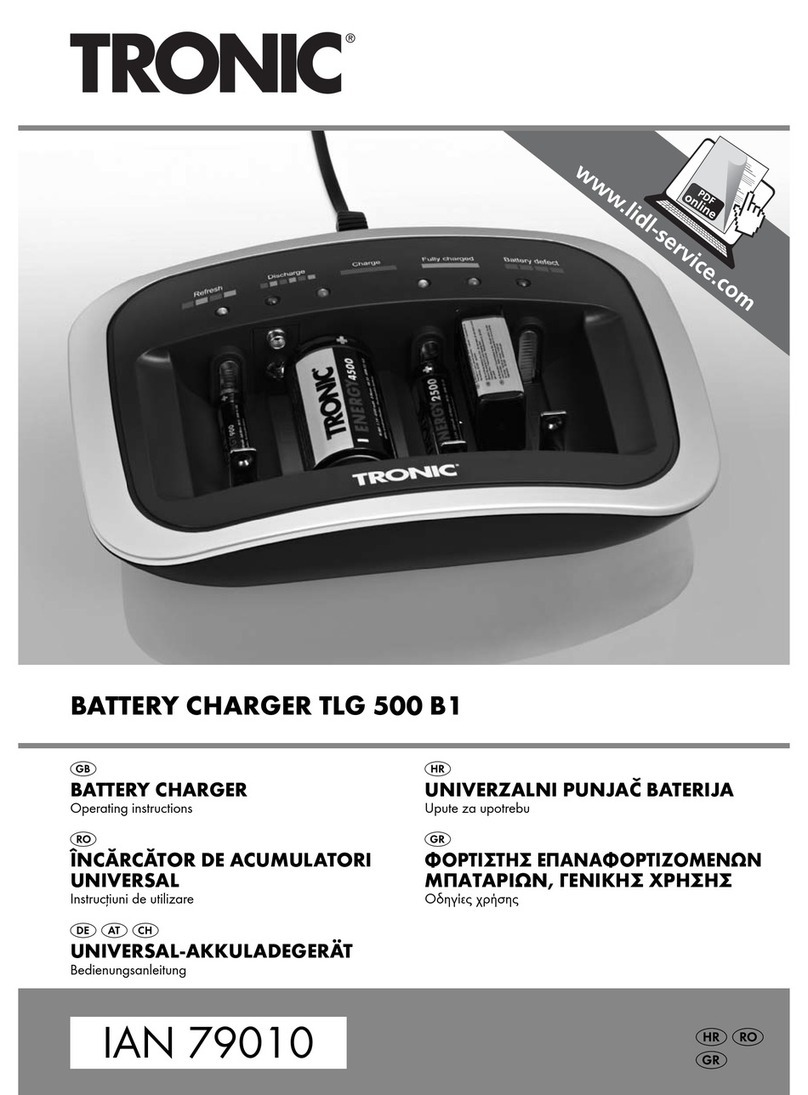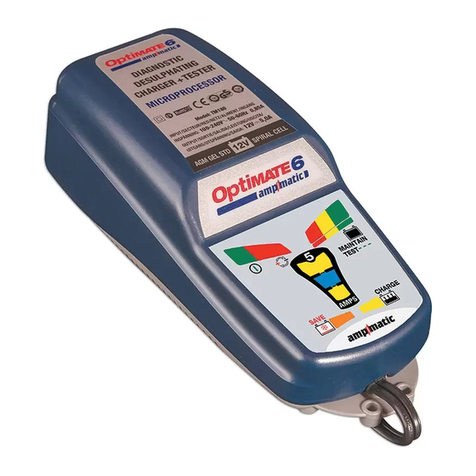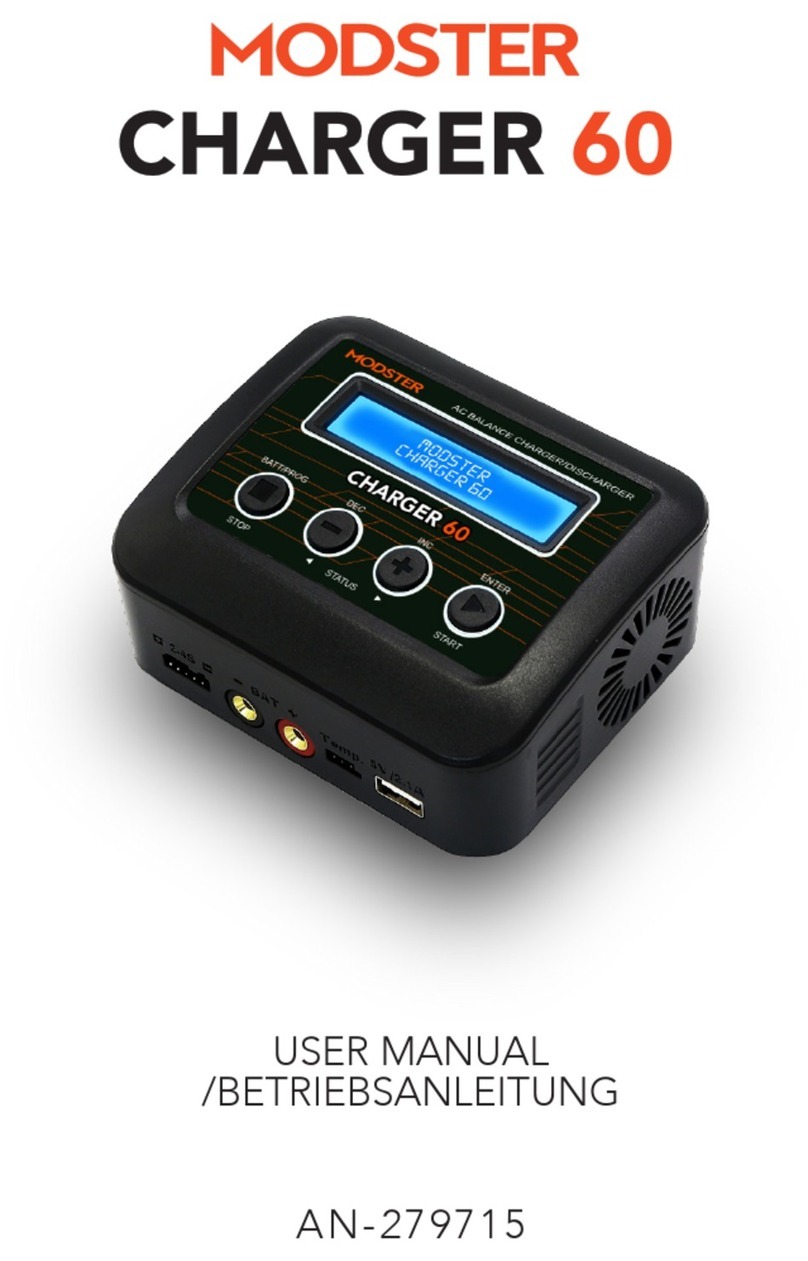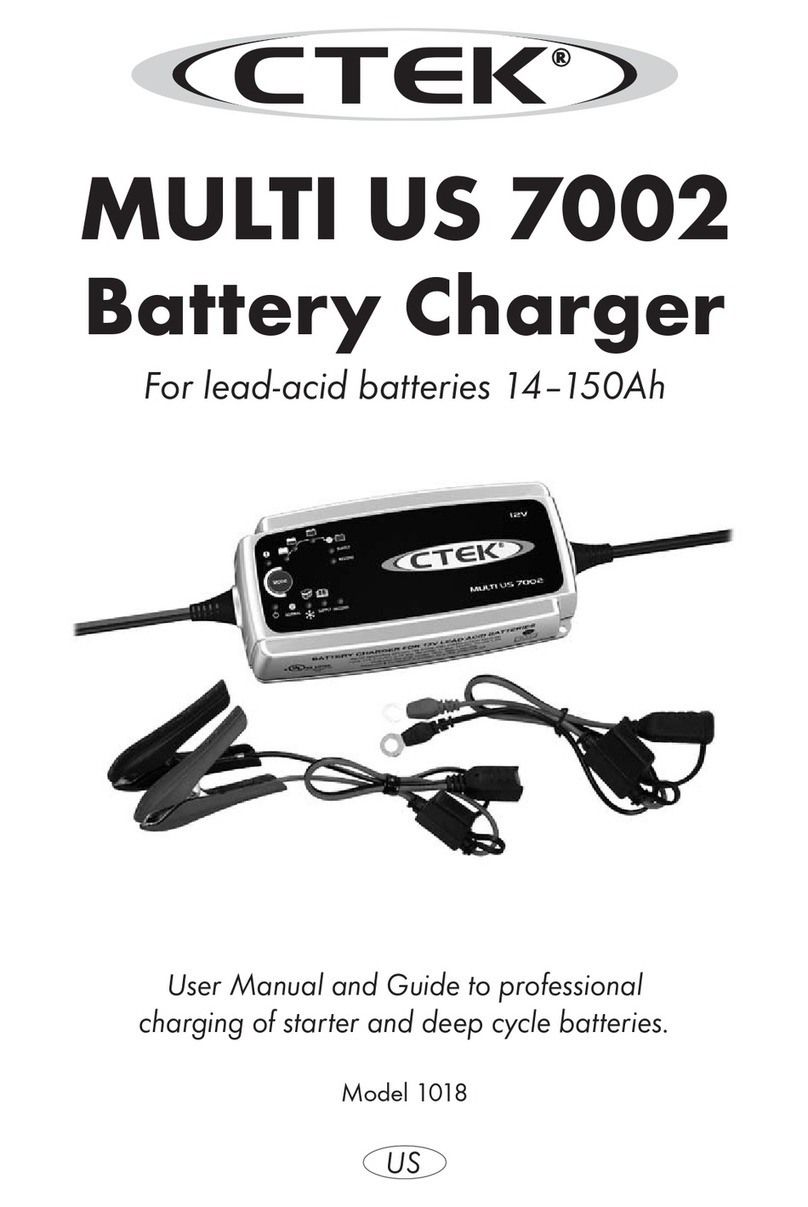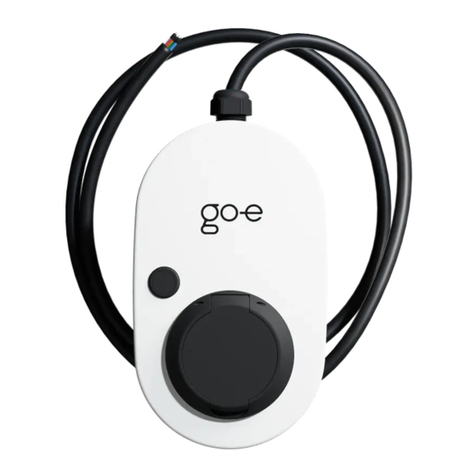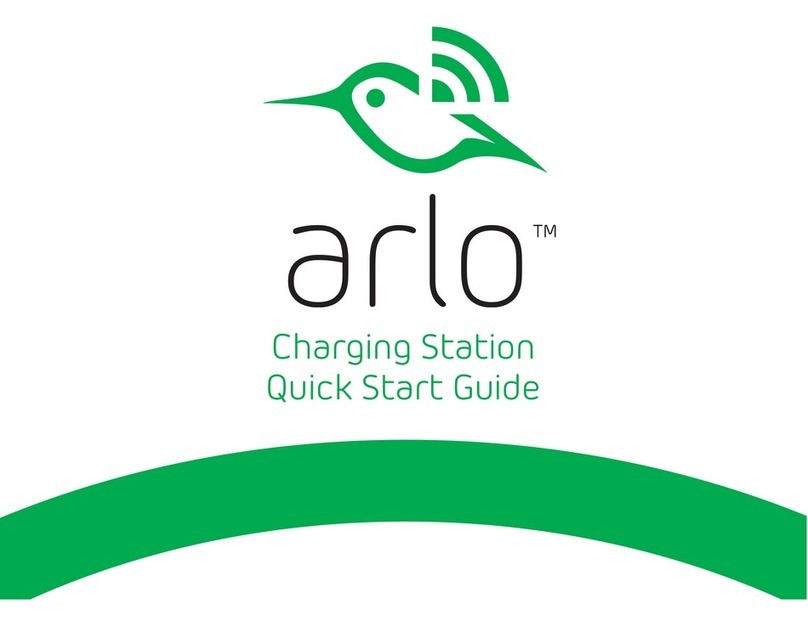Linear Technology LTC3558 User manual

LTC3558
1
3558f
, LT, LTC, LTM and Burst Mode are registered trademarks of Linear Technology
Corporation. All other trademarks are the property of their respective owners.
TYPICAL APPLICATION
FEATURES
APPLICATIONS
DESCRIPTION
Linear USB Battery Charger
with Buck and
Buck-Boost Regulators
The LTC
®
3558 is a USB battery charger with dual high ef-
ficiency switching regulators. The device is ideally suited
to power single-cell Li-Ion/Polymer based handheld ap-
plications needing multiple supply rails.
Battery charge current is programmed via the PROG pin
and the HPWR pin with capability up to 950mA of current
at the BAT pin. The CHRG pin allows battery status to be
monitored continuously during the charging process. An
internal timer controls charger termination.
The part includes monolithic synchronous buck and buck-
boost regulators that can provide up to 400mA of output
current each and operate at efficiencies greater than 90%
over the entire Li-Ion/Polymer battery range. The buck-
boostregulatorcanregulateits programmedoutputvoltage
at its rated deliverable current over the entire Li-Ion range
without drop out, increasing battery runtime.
TheLTC3558is offered in alowprofile(0.75mm), thermally
enhanced, 20-lead (3mm ×3mm) QFN package.
USB Charger Plus Buck Regulator and Buck-Boost Regulator
Battery Charger
nStandalone USB Charger
nUp to 950mA Charge Current Programmable via
Single Resistor
nHPWR Input Selects 20% or 100% of Programmed
Charge Current
nNTC Input for Temperature Qualified Charging
nInternal Timer Termination
nBad Battery Detection
Switching Regulators (Buck and Buck-Boost)
nUp to 400mA Output Current per Regulator
n2.25MHz Constant-Frequency Operation
nPower Saving Burst Mode
®
Operation
nLow Profile, 20-Lead, 3mm ×3mm QFN Package
nSD/Flash-Based MP3 Players
nLow Power Handheld Applications
VCC
NTC
PROG
SUSP
HPWR
EN1
4.7µH 10µF
649k
324k
10pF
22µF
10pF
LTC3558
GND
EXPOSED
PAD
1µF
2.2µH
1.74k
EN2
MODE
BAT
USB (4.3V TO 5.5V)
DIGITAL
CONTROL
PVIN1
PVIN2
SW1
FB1
SWAB2
SWCD2
VOUT2
FB2
VC2
1.2V AT 400mA
SINGLE
Li-lon CELL
(2.7V TO 4.2V)
105k
324k
15k
121k
3.3V AT 400mA
330pF
33pF
3558 TA01
+
CHRG
10µF
Demo Board

LTC3558
2
3558f
ABSOLUTE MAXIMUM RATINGS
VCC (Transient);
t < 1ms and Duty Cycle < 1%....................... –0.3V to 7V
VCC (Static) .................................................. –0.3V to 6V
BAT, CHRG ................................................... –0.3V to 6V
PROG, SUSP.................................–0.3V to (VCC + 0.3V)
HPWR, NTC................... –0.3V to Max (VCC, BAT) + 0.3V
PROG Pin Current ...............................................1.25mA
BAT Pin Current ..........................................................1A
PVIN1, PVIN2 ..................................–0.3V to (BAT + 0.3V)
EN1, EN2, MODE, VOUT2 .............................. –0.3V to 6V
FB1, SW1......................... –0.3V to (PVIN1 + 0.3V) or 6V
FB2, VC2, SWAB2............. –0.3V to (PVIN2 + 0.3V) or 6V
SWCD2 ............................–0.3V to (VOUT2 + 0.3V) or 6V
ISW1 ...............................................................600mA DC
ISWAB2, ISWCD2, IVOUT2 ...................................750mA DC
Junction Temperature (Note 2) ............................. 125°C
Operating Temperature Range (Note 3).... –40°C to 85°C
Storage Temperature.............................. –65°C to 125°C
(Note 1)
PIN CONFIGURATION
20 19 18 17 16
7 8
TOP VIEW
21
UD PACKAGE
20-LEAD (3mm ×3mm) PLASTIC QFN
910
GND
BAT
MODE
FB1
EN1
EN2
VC2
FB2
SUSP
VOUT2
SW1
PVIN1
PVIN2
SWAB2
SWCD2
12
11
13
14
15
4
5
3
2
1
6
VCC
CHRG
PROG
NTC
HPWR
TJMAX = 125°C, θJA = 68°C/W
EXPOSED PAD (PIN 21) IS GND, MUST BE SOLDERED TO PCB
ORDER INFORMATION
LEAD FREE FINISH TAPE AND REEL PART MARKING PACKAGE DESCRIPTION TEMPERATURE RANGE
LTC3558EUD#PBF LTC3558EUD#TRPBF LDCD 20-Lead (3mm ×3mm) Plastic QFN –40°C to 85°C
Consult LTC Marketing for parts specified with wider operating temperature ranges.
Consult LTC Marketing for information on non-standard lead based finish parts.
For more information on lead free part marking, go to: http://www.linear.com/leadfree/
For more information on tape and reel specifications, go to: http://www.linear.com/tapeandreel/

LTC3558
3
3558f
SYMBOL PARAMETER CONDITIONS MIN TYP MAX UNITS
Battery Charger
VCC Input Supply Voltage l4.3 5.5 V
IVCC Battery Charger Quiescent Current
(Note 4)
Standby Mode, Charge Terminated
Suspend Mode, VSUSP = 5V
285
8.5
400
17
µA
µA
VFLOAT BAT Regulated Output Voltage
0°C ≤ TA≤ 85°C
4.179
4.165
4.200
4.200
4.221
4.235
V
V
ICHG Constant-Current Mode Charge
Current
HPWR = 1
HPWR = 0
l440
84
460
92
500
100
mA
mA
IBAT Battery Drain Current Standby Mode, Charger Terminated, EN1 = EN2 = 0
Shutdown, VCC < VUVLO, BAT = 4.2V, EN1 = EN2 = 0
Suspend Mode, SUSP = 5V, BAT = 4.2V, EN1 = EN2 = 0
VCC = 0V, EN1 = EN2 = 1, MODE = 1,
FB1 = FB2 = 0.85V, VOUT2 = 3.6V
–3.5
–2.5
–1.5
–50
–7
–4
–3
–100
µA
µA
µA
µA
VUVLO Undervoltage Lockout Threshold BAT = 3.5V, VCC Rising 3.85 4 4.125 V
ΔVUVLO Undervoltage Lockout Hysteresis BAT = 3.5V 200 mV
VDUVLO Differential Undervoltage Lockout
Threshold
BAT = 4.05V, (VCC – BAT) Falling 30 50 70 mV
ΔVDUVLO Differential Undervoltage Lockout
Hysteresis
BAT = 4.05V 130 mV
VPROG PROG Pin Servo Voltage HPWR = 1
HPWR = 0
BAT < VTRKL
1.000
0.200
0.100
V
V
V
hPROG Ratio of IBAT to PROG Pin Current 800 mA/mA
ITRKL Trickle Charge Current BAT < VTRKL 36 46 56 mA
VTRKL Trickle Charge Threshold Voltage BAT Rising 2.8 2.9 3 V
ΔVTRKL Trickle Charge Hysteresis Voltage 100 mV
ΔVRECHRG Recharge Battery Threshold Voltage Threshold Voltage Relative to VFLOAT –75 –95 –115 mV
tRECHRG Recharge Comparator Filter Time BAT Falling 1.7 ms
tTERM Safety Timer Termination Period BAT = VFLOAT 3.5 4 4.5 Hour
tBADBAT Bad Battery Termination Time BAT < VTRKL 0.4 0.5 0.6 Hour
hC/10 End-of-Charge Indication Current Ratio (Note 5) 0.085 0.1 0.11 mA/mA
tC/10 End-of-Charge Comparator Filter Time IBAT Falling 2.2 ms
RON(CHG) Battery Charger Power FET On-
Resistance (Between VCC and BAT)
IBAT = 190mA 500 mΩ
TLIM Junction Temperature in Constant
Temperature Mode
105 °C
NTC
VCOLD Cold Temperature Fault Threshold
Voltage
Rising NTC Voltage
Hysteresis
75 76.5
1.6
78 %VCC
%VCC
VHOT Hot Temperature Fault Threshold
Voltage
Falling NTC Voltage
Hysteresis
33.4 34.9
1.6
36.4 %VCC
%VCC
VDIS NTC Disable Threshold Voltage Falling NTC Voltage
Hysteresis
l0.7 1.7
50
2.7 %VCC
mV
INTC NTC Leakage Current VNTC = VCC = 5V –1 1 µA
ELECTRICAL CHARACTERISTICS
The ldenotes specifications that apply over the full operating temperature
range, otherwise specifications are at TA = 25°C. VCC = 5V, BAT = PVIN1 = PVIN2 = 3.6V, RPROG = 1.74k, unless otherwise noted.

LTC3558
4
3558f
SYMBOL PARAMETER CONDITIONS MIN TYP MAX UNITS
Logic (HPWR, SUSP, CHRG, EN1, EN2, MODE)
VIL Input Low Voltage HPWR, SUSP, MODE, EN1, EN2 Pins 0.4 V
VIH Input High Voltage HPWR, SUSP, MODE, EN1, EN2 Pins 1.2 V
RDN Logic Pin Pull-Down Resistance HPWR, SUSP Pins l1.9 4 6.3 MΩ
VCHRG CHRG Pin Output Low Voltage ICHRG = 5mA 100 250 mV
ICHRG CHRG Pin Input Current BAT = 4.5V, VCHRG = 5V 0 1 µA
Buck Switching Regulator
PVIN1 Input Supply Voltage l2.7 4.2 V
IPVIN1 Pulse Skip Input Current
Burst Mode Current
Shutdown Current
Supply Current in UVLO
FB1 = 0.85V, MODE = 0 (Note 6)
FB1 = 0.85V, MODE = 1 (Note 6)
EN1 = 0
PVIN1 = PVIN2 = 2V
l
220
35
0
4
400
50
2
8
µA
µA
µA
µA
PVIN1 UVLO PVIN1 Falling
PVIN1 Rising
l
l
2.30 2.45
2.55 2.70
V
V
fOSC Switching Frequency MODE = 0 1.91 2.25 2.59 MHz
ILIMSW1 Peak PMOS Current Limit 550 800 1050 mA
VFB1 Feedback Voltage MODE = 0 l780 800 820 mV
IFB1 FB Input Current FB1 = 0.85V –50 50 nA
DMAX1 Maximum Duty Cycle FB1 = 0V l100 %
RPMOS1 RDS(ON) of PMOS ISW1 = 100mA 0.65 Ω
RNMOS1 RDS(ON) of NMOS ISW1 = –100mA 0.75 Ω
RSW1(PD) SW Pull-Down in Shutdown 13 kΩ
Buck-Boost Switching Regulator
PVIN2 Input Supply Voltage l2.7 4.2 V
IPVIN2 PWM Input Current
Burst Mode Input Current
Shutdown Current
Supply Current in UVLO
MODE = 0, IOUT = 0A, FB2 = 0.85V (Note 6)
MODE = 1, IOUT = 0A, FB2 = 0.85V (Note 6)
EN2 = 0, IOUT = 0A
PVIN1 = PVIN2 = 2V
220
20
0
4
400
30
1
8
µA
µA
µA
µA
PVIN2 UVLO PVIN2 Falling
PVIN2 Rising
l
l
2.30 2.45
2.55 2.70
V
V
VOUT2(LOW) Minimum Regulated Buck-Boost VOUT 2.65 2.75 V
VOUT2(HIGH) Maximum Regulated Buck-Boost VOUT 5.45 5.60 V
ILIMF2 Forward Current Limit (Switch A) MODE = 0 l580 700 820 mA
IPEAK2(BURST) Forward Current Limit (Switch A) MODE = 1 l180 250 320 mA
ILIMR2 Reverse Current Limit (Switch D) MODE = 0 l325 450 575 mA
IZERO2(BURST) Reverse Current Limit (Switch D) MODE = 1 l–35 0 35 mA
IMAX2(BURST) Maximum Deliverable Output Current
in Burst Mode Operation
2.7V < PVIN2 < 4.2V
2.75V < VOUT2 < 5.5V
50 mA
VFB2 Feedback Servo Voltage l780 800 820 mV
IFB2 FB2 Input Current FB2 = 0.85V –50 50 nA
fOSC Switching Frequency MODE = 0 1.91 2.25 2.59 MHz
ELECTRICAL CHARACTERISTICS
The ldenotes specifications that apply over the full operating temperature
range, otherwise specifications are at TA = 25°C. VCC = 5V, BAT = PVIN1 = PVIN2 = 3.6V, RPROG = 1.74k, unless otherwise noted.

LTC3558
5
3558f
Note 1: Stresses beyond those listed under Absolute Maximum Ratings
may cause permanent damage to the device. Exposure to any Absolute
Maximum Rating condition for extended periods may affect device
reliability and lifetime.
Note 2: TJis calculated from the ambient temperature TAand power
dissipation PDaccording to the following formula:
T
J = TA + (PD • θJA)
Note 3: The LTC3558E is guaranteed to meet specifications from 0°C to
85°C. Specifications over the –40°C to 85°C operating temperature range
are assured by design, characterization and correlation with statistical
process controls.
Note 4: VCC supply current does not include current through the PROG pin
or any current delivered to the BAT pin. Total input current is equal to this
specification plus 1.00125 • IBAT where IBAT is the charge current.
Note 5: IC/10 is expressed as a fraction of measured full charge current
with indicated PROG resistor.
Note 6: Dynamic supply current is higher due to the gate charge being
delivered at the switching frequency.
SYMBOL PARAMETER CONDITIONS MIN TYP MAX UNITS
RDSP(ON) PMOS RDS(ON) VOUT = 3.6V 0.6 Ω
RDSN(ON) NMOS RDS(ON) 0.6 Ω
ILEAK(P) PMOS Switch Leakage Switches A, D –1 1 µA
ILEAK(N) NMOS Switch Leakage Switches B, C –1 1 µA
DCBUCK(MAX) Maximum Buck Duty Cycle MODE = 0 l100 %
DCBOOST(MAX) Maximum Boost Duty Cycle MODE = 0 75 %
tSS2 Soft-Start Time 0.5 ms
ROUT(PD) VOUT Pull-Down in Shutdown 10 kΩ
ELECTRICAL CHARACTERISTICS
The ldenotes specifications that apply over the full operating temperature
range, otherwise specifications are at TA = 25°C. VCC = 5V, BAT = PVIN1 = PVIN2 = 3.6V, RPROG = 1.74k, unless otherwise noted.

LTC3558
6
3558f
PROG Voltage
vs Battery Charge Current
TEMPERATURE (°C)
–55
3.9
4.0
4.2
545
3558 G07
3.8
3.7
–35 –15 25 65 85
3.6
3.5
4.1
VCC (V)
BAT = 3.5V
RISING
FALLING
Battery Drain Current in Undervoltage
Lockout vs Temperature
TEMPERATURE (°C)
–55
IBAT (µA)
2.0
2.5
3.0
545
3558 G08
1.5
1.0
–35 –15 25 65 85
0.5
0
BAT = 4.2V
EN1 = EN2 = 0V
BAT = 3.6V
IBAT (mA)
0
VPROG (V)
0.4
0.8
1.2
0.2
0.6
1.0
100 200 300 400
3558 G09
500500 150 250 350 450
VCC = 5V
HPWR = 5V
RPROG = 1.74k
EN1 = EN2 = 0V
Battery Charger Undervoltage
Lockout Threshold vs Temperature
TEMPERATURE (°C)
–55
0
CURRENT (µA)
1
3
4
5
10
7
–15 25 45
3558 G01
2
8
9IVCC
6
–35 565 85
VCC = 5V
BAT = 4.2V
SUSP = 5V
EN1 = EN2 = 0V
IBAT
TYPICAL PERFORMANCE CHARACTERISTICS
TEMPERATURE (°C)
–55
VFLOAT (V)
4.23
5
3558 G02
4.20
4.18
–35 –15 25
4.17
4.16
4.24
4.22
4.21
4.19
45 65 85
VCC = 5V
IBAT (mA)
100
VBAT (V)
4.180
4.190
4.205
4.200
900
3558 G03
4.170
4.160
4.175
4.185
4.195
4.165
4.155
4.150 300 500 700
2000 400 600 800 1000
VCC = 5V
HPWR = 5V
RPROG = 845
EN1 = EN2 = 0V
VCC (V)
4.3
440
IBAT (mA)
450
460
470
480
500
4.5 4.6 4.9 5.1
3558 G04
5.34.4 4.7 4.8 5.0 5.2 5.4 5.5
490
445
455
465
475
495
485
VCC = 5V
HPWR = 5V
RPROG = 1.74k
EN1 = EN2 = 0V
VBAT (V)
2
IBAT (mA)
300
400
500
4
3558 G05
200
100
250
350
450
150
50
02.5 33.5 4.5
VCC = 5V
RPROG = 1.74k
HPWR = 5V
HPWR = 0V
TEMPERATURE (°C)
–55
0
IBAT (mA)
50
150
200
250
500
350
–15 25 45 125
3558 G06
100
400
450
300
–35 5 65 85 105
VCC = 5V
HPWR = 5V
RPROG = 1.74k
EN1 = EN2 = 0
Suspend State Supply and BAT
Currents vs Temperature
Battery Regulation (Float)
Voltage vs Temperature
Battery Regulation (Float) Voltage
vs Battery Charge Current,
Constant-Voltage Charging
Battery Charge Current
vs Supply Voltage
Battery Charge Current
vs Battery Voltage
Battery Charge Current vs Ambient
Temperature in Thermal Regulation
TA = 25°C, unless otherwise noted.

LTC3558
7
3558f
Timer Accuracy vs Temperature
Buck and Buck-Boost Regulator
Switching Frequency vs Temperature
TEMPERATURE (°C)
–55
–2
PERCENT ERROR (%)
–1
1
2
3
25
7
3558 G16
0
–15
–35 45 65
585
4
5
6
VCC = 5V
TIME (HOUR)
0
IBAT (mA)BAT (V)CHRG (V)
5.0
200
0
400
800
600
1000
35
3558 G17
3.5
3.0
5.0
4.5
4.0
3.0
4.0
1.0
2.0
0
12 4 6
VCC = 5V
RPROG = 0.845k
HPWR = 5V
Recharge Threshold
vs Temperature
Battery Charger FET
On-Resistance vs Temperature
SUSP/HPWR Pin Rising
Thresholds vs Temperature
CHRG Pin Output Low Voltage
vs Temperature Timer Accuracy vs Supply Voltage
TEMPERATURE (°C)
–55
75
VRECHARGE (mV)
79
87
91
95
115
103
–15 25 45
3558 G10
83
107
111
99
–35 565 85
VCC = 5V
TEMPERATURE (°C)
–55
RDS(ON) (m)
500
550
600
85
3558 G11
450
400
300 –35 –15 5 25 45 65
350
700
650
VCC = 4V
IBAT = 200mA
EN1 = EN2 = 0V
TEMPERATURE (°C)
–55
THRESHOLD (V)
1.1
5
3558 G12
0.8
0.6
–35 –15 25
0.5
0.4
1.2
1.0
0.9
0.7
45 65 85
VCC = 5V
TEMPERATURE (°C)
–55
80
100
140
545
3558 G13
60
40
–35 –15 25 65 85
20
0
120
VOLTAGE (mV)
VCC = 5V
ICHRG = 5mA
CHRG Pin I-V Curve
CHRG (V)
0
70
60
50
40
30
20
10
035
3558 G14
12 46
ICHRG (mA)
VCC = 5V
BAT = 3.8V
VCC (V)
4.3
–1.0
PERCENT ERROR (%)
–0.5
0
0.5
1.0
2.0
4.5 4.7 4.9 5.1
3558 G15
5.3 5.5
1.5
TYPICAL PERFORMANCE CHARACTERISTICS
Complete Charge Cycle
2400mAh Battery
TEMPERATURE (°C)
–55
1.725
FREQUENCY (MHz)
1.825
2.025
2.125
2.225
2.425
–15 25 45 125
3558 G18
1.925
2.325
–35 5 65 85 105
BAT = 4.2V
BAT = 2.7V BAT = 3.6V
VCC = 0V, MODE = 0
BAT = PVIN1 = PVIN2
TA = 25°C, unless otherwise noted.

LTC3558
8
3558f
Buck Regulator Input Current vs
Temperature, Pulse Skip Mode
Buck and Buck-Boost Regulator
Enable Thresholds
vs Temperature
Buck Regulator PMOS RDS(0N)
vs Temperature
TEMPERATURE (°C)
–55
100
INPUT CURRENT (µA)
150
250
300
350
–15 25 45 125
3558 G22
200
–35 5 65 85 105
400 FB1 = 0.85V
PVIN1 = 4.2V
PVIN1 = 2.7V
TEMPERATURE (°C)
–55
400
RDS(ON) (m)
500
700
800
900
65
1300
3558 G23
600
5
–35 85
25
–15 105
45 12
5
1000
1100
1200
PVIN1 = 2.7V
PVIN1 = 4.2V
Buck Regulator NMOS RDS(0N)
vs Temperature
TEMPERATURE (°C)
–55
400
RDS(ON) (m)
500
700
800
900
65
1300
3558 G24
600
5
–35 85
25
–15 105
45 12
5
1000
1100
1200
PVIN1 = 2.7V
PVIN1 = 4.2V
TYPICAL PERFORMANCE CHARACTERISTICS
Buck Regulator Input Current vs
Temperature, Burst Mode Operation
TEMPERATURE (°C)
–55
20
INPUT CURRENT (µA)
25
35
40
45
–15 25 45 125
3558 G21
30
–35 5 65 85 105
50 FB1 = 0.85V
PVIN1 = 4.2V
PVIN1 = 2.7V
Buck and Buck-Boost Regulator
Undervoltage Thresholds
vs Temperature
ILOAD (mA)
30
EFFICIENCY (%)
90
100
20
10
80
50
70
60
40
0.1 10 100 1000
3558 G25
0
1
VOUT = 1.2V
PVIN1 = 2.7V
PVIN1 = 4.2V
Burst Mode
OPERATION
PULSE SKIP
MODE
Buck Regulator Efficiency vs ILOAD Buck Regulator Load Regulation
ILOAD (mA)
1
1.19
VOUT (V)
1.20
1.21
1.22
1.23
10 100 100
0
3558 G26
1.18
1.17
1.16
1.15
1.24
1.25 PVIN1 = 3.6V
VOUT = 1.2V
Burst Mode
OPERATION
PULSE SKIP
MODE
Buck Regulator Line Regulation
TEMPERATURE (°C)
–55
2.250
INPUT VOLTAGE (V)
2.300
2.400
2.450
2.500
2.750
2.600
–15 25 45 125
3558 G19
2.350
2.650
2.700
2.550
–35 5 65 85 105
RISING
BAT = PVIN1 = PVIN2
FALLING
TEMPERATURE (°C)
–55
400
VEN (V)
500
700
800
900
1200
1100
–15 25 45 125
3558 G20
600
1000
–35 5 65 85 105
RISING
BAT = PVIN1 = PVIN2 = 3.6V
FALLING
2.700 3.300 3.900 4.200
3.000 3.600
PVIN1 (V)
VOUT (V)
1.170
1.220
1.230
1.240
1.250
1.200
1.160
1.210
1.150
1.190
1.180
3558 G27
ILOAD = 200mA
TA = 25°C, unless otherwise noted.

LTC3558
9
3558f
Buck Regulator Start-Up Transient
Buck Regulator
Pulse Skip Mode Operation
VOUT
500mV/DIV
EN
2V/DIV
PVIN1 = 3.8V
PULSE SKIP MODE
LOAD = 6
50µs/DIV 3558 G28
INDUCTOR
CURRENT
IL= 200mA/
DIV
Buck Regulator
Burst Mode Operation
VOUT
20mV/
DIV (AC)
SW
2V/DIV
PVIN1 = 3.8V
LOAD = 10mA
200ns/DIV 3558 G29
INDUCTOR
CURRENT
IL= 50mA/
DIV
VOUT
20mV/
DIV (AC)
SW
2V/DIV
PVIN1 = 3.8V
LOAD = 60mA
2µs/DIV 3558 G30
INDUCTOR
CURRENT
IL= 60mA/
DIV
TYPICAL PERFORMANCE CHARACTERISTICS
Buck Regulator Transient
Response, Pulse Skip Mode
VOUT
50mV/
DIV (AC)
LOAD STEP
5mA TO
290mA
PVIN1 = 3.8V 50µs/DIV 3558 G31
INDUCTOR
CURRENT
IL = 200mA/
DIV
Buck Regulator Transient
Response, Burst Mode Operation
VOUT
50mV/
DIV (AC)
LOAD STEP
5mA TO
290mA
PVIN1 = 3.8V 50µs/DIV 3558 G32
INDUCTOR
CURRENT
IL= 200mA/
DIV
Buck-Boost Regulator Input
Current vs Temperature
Buck-Boost Regulator Input
Current vs Temperature
Buck-Boost Regulator PMOS
RDS(ON) vs Temperature
Buck-Boost Regulator NMOS
RDS(ON) vs Temperature
TEMPERATURE (°C)
–55
5
INPUT CURRENT (µA)
10
20
25
30
–15 25 45 125
3558 G33
15
–35 5 65 85 105
Burst Mode OPERATION
FB2 = 0.85V
PVIN2 = 2.7V
PVIN2 = 4.2V
TEMPERATURE (°C)
–55
100
INPUT CURRENT (µA)
150
250
300
350
500
450
–15 25 45 125
3558 G34
200
400
–35 5 65 85 105
PVIN2 = 2.7V
PVIN2 = 4.2V
PWM MODE
FB2 = 0.85V
–55 –15 25 45 125
–35 5 65 85 105
TEMPERATURE (°C)
RDS(ON) (m)
400
650
700
750
800
300
550
350
600
250
200
500
450
3558 G35
PVIN2 = 2.7V
PVIN2 = 4.2V
TEMPERATURE (°C)
–55
200
RDS(ON) (m)
300
500
600
700
1200
900
–15 25 45 125
3558 G36
400
1000
1100
800
–35 5 65 85 105
PVIN2 = 2.7V
PVIN2 = 4.2V
TA = 25°C, unless otherwise noted.

LTC3558
10
3558f
TYPICAL PERFORMANCE CHARACTERISTICS
Buck-Boost Regulator Start-Up
Transient, PWM Mode
Buck-Boost Regulator Start-Up
Transient, Burst Mode Operation
Buck-Boost Regulator
Line Regulation
Buck-Boost Regulator
Efficiency vs Input Voltage
Buck-Boost Efficiency
vs Load Current
Buck-Boost Regulator
Load Regulation
2.700 3.300 3.900 4.200
3.000 3.600
PVIN2 (V)
EFFICIENCY (%)
60
85
90
95
100
75
55
80
50
70
65
3558 G37
ILOAD = 100mA
ILOAD = 400mA
ILOAD = 10mA ILOAD = 1mA
VOUT = 3.3V
Burst Mode
OPERATION
PWM MODE
ILOAD (mA)
3.27
VOUT (V)
3.29
3.31
3.33
3.35
0.10 10 100 1000
3.24
3.25
1
3.36
3.28
3.30
3.32
3.34
3.26
3558 G39
PWM MODE
Burst Mode OPERATION
PVIN2 = 3.6V
2.700 3.300 3.900 4.200
3.000 3.600
PVIN2 (V)
VOUT (V)
3.28
3.33
3.34
3.35
3.36
3.26
3.31
3.27
3.32
3.25
3.24
3.30
3.29
3558 G40
PWM MODE
ILOAD = 100mA
Burst Mode
OPERATION
ILOAD = 10mA
ILOAD (mA)
30
EFFICIENCY (%)
50
70
90
0
10
100
40
60
80
20
3558 G38
3.6V
4.2V
3.6V
4.2V
2.7V
2.7V
VOUT = 3.3V
PVIN2, Burst Mode
OPERATION
PVIN2, PWM MODE
0.10 10 100 10001
VOUT
1V/DIV
EN2
1V/DIV
100µs/DIV 3558 G41
INDUCTOR
CURRENT
IL = 200mA/DIV
PVIN2 = 3.6V
RLOAD = 332
VOUT
1V/DIV
EN2
1V/DIV
100µs/DIV 3558 G42
INDUCTOR
CURRENT
IL = 200mA/DIV
PVIN2 = 3.6V
RLOAD = 16
TA = 25°C, unless otherwise noted.

LTC3558
11
3558f
PIN FUNCTIONS
GND (Pin 1): Ground. Connect to Exposed Pad (Pin 21).
BAT (Pin 2): Charge Current Output. Provides charge cur-
rent to the battery and regulates final float voltage to 4.2V.
MODE (Pin 3): MODE Pin for Switching Regulators. When
held high, both regulators operate in Burst Mode Opera-
tion. When held low, the buck regulator operates in pulse
skip mode and the buck-boost regulator operates in PWM
mode. This pin is a high impedance input; do not float.
FB1 (Pin 4): Buck Regulator Feedback Voltage Pin. Re-
ceives feedback by a resistor divider connected across
the output.
EN1 (Pin 5): Enable Input Pin for the Buck Regulator. This
pin is a high impedance input; do not float. Active high.
SW1 (Pin 6): Buck Regulator Switching Node. External
inductor connects to this node.
PVIN1 (Pin 7): Input Supply Pin for Buck Regulator. Con-
nect to BAT and PVIN2. A single 10µF input decoupling
capacitor to GND is required.
PVIN2 (Pin 8): Input Supply Pin for Buck-Boost Regulator.
Connect to BAT and PVIN1. A single 10µF input decoupling
capacitor to GND is required.
SWAB2 (Pin 9): Switch Node for Buck-Boost Regulator
ConnectedtotheInternal Power Switches A andB.External
inductor connects between this node and SWCD2.
SWCD2 (Pin 10): Switch Node for Buck-Boost Regulator
Connectedtothe Internal Power SwitchesCandD. External
inductor connects between this node and SWAB2.
VOUT2 (Pin 11): Regulated Output Voltage for Buck-Boost
Regulator.
SUSP (Pin 12): Suspend Battery Charging Operation. A
voltage greater than 1.2V on this pin puts the battery char-
ger in suspend mode, disables the charger and resets the
termination timer. A weak pull-down current is internally
applied to this pin to ensure it is low at power-up when
the input is not being driven externally.
FB2 (Pin 13): Buck-Boost Regulator Feedback Voltage
Pin. Receives feedback by a resistor divider connected
across the output.
VC2 (Pin 14): Output of the Error Amplifier and Voltage
Compensation Node for the Buck-Boost Regulator. Ex-
ternal Type I or Type III compensation (to FB2) connects
to this pin.
EN2 (Pin 15): Enable Input Pin for the Buck-Boost Regu-
lator. This pin is a high impedance input; do not float.
Active high.
HPWR (Pin 16): High Current Battery Charging Enabled.
A voltage greater than 1.2V at this pin programs the
BAT pin current at 100% of the maximum programmed
charge current. A voltage less than 0.4V sets the BAT pin
current to 20% of the maximum programmed charge
current. When used with a 1.74k PROG resistor, this pin
can toggle between low power and high power modes per
USB specification. A weak pull-down current is internally
applied to this pin to ensure it is low at power-up when
the input is not being driven externally.
NTC (Pin 17): Input to the NTC Thermistor Monitoring
Circuit. The NTC pin connects to a negative temperature
coefficient thermistor which is typically co-packaged with
the battery pack to determine if the battery is too hot or too
cold to charge. If the battery temperature is out of range,
charging is paused until the battery temperature re-enters
the valid range. A low drift bias resistor is required from
VCC to NTC and a thermistor is required from NTC to
ground. To disable the NTC function, the NTC pin should
be tied to ground.
PROG (Pin 18): Charge Current Program and Charge
Current Monitor Pin. Charge current is programmed by
connecting a resistor from PROG to ground. When charg-
ing in constant-current mode, the PROG pin servos to 1V
if the HPWR pin is pulled high, or 200mV if the HPWR pin
is pulled low. The voltage on this pin always represents
the BAT pin current through the following formula:
IPROG
R
BAT PROG
=•800
CHRG (Pin 19): Open-Drain Charge Status Output. The
CHRG pin indicates the status of the battery charger. Four
possible states are represented by CHRG charging, not
charging (i.e., the charge current is less than one-tenth

LTC3558
12
3558f
BLOCK DIAGRAM
of the full-scale charge current), unresponsive battery
(i.e., the battery voltage remains below 2.9V after one half
hour of charging) and battery temperature out of range.
CHRG requires a pull-up resistor and/or LED to provide
indication.
VCC (Pin 20): Battery Charger Input. A 1µF decoupling
capacitor to GND is recommended.
Exposed Pad (Pin 21): Ground. The Exposed Pad must
be soldered to PCB ground to provide electrical contact
and rated thermal performance.
PIN FUNCTIONS
19
–
+
TA
800x
BAT
1x
TDIE
TDIE
PVIN1
OT
CA
NTCA
NTC REF
LOGIC
CHRG
20
2
PROG
BATTERY CHARGER
BUCK REGULATOR
CONTROL
LOGIC
MODEEN
CLK
0.8V
18
PVIN1 7
SW1 6
PVIN2 8
VOUT2
SWAB2
D
C
A
B
9
1 21
VCC
16 HPWR
12 SUSP
NTC
MODE
MP
MN
EN1
EN2
FB1
MAXER
VCC BAT
BODY
–
+
Gm
BUCK-BOOST REGULATOR
3558 BD
CONTROL
LOGIC
MODEEN
VC2
GND EXPOSED PAD
CLK
0.8V
–
+
UNDERVOLTAGE
LOCKOUT
DIE
TEMPERATURE
ERROR
AMP
BANDGAP
OSCILLATOR
2.25MHz
VREF
= 0.8V
CLK
17
3
5
15
4
FB2
13
VC2
14
11
SWCD2 10
PVIN2

LTC3558
13
3558f
OPERATION
The LTC3558 is a linear battery charger with a monolithic
synchronous buck regulator and a monolithic synchro-
nous buck-boost regulator. The buck regulator is inter-
nally compensated and needs no external compensation
components.
Thebattery charger employs a constant-current, constant-
voltage charging algorithm and is capable of charging a
singleLi-Ionbattery at charging currentsupto950mA.The
usercanprogramthemaximumcharging current available
at the BAT pin via a single PROG resistor. The actual BAT
pin current is set by the status of the HPWR pin.
For proper operation, the BAT, PVIN1 and PVIN2 pins
must be tied together, as shown in Figure 1. Cur-
rent being delivered at the BAT pin is 500mA. Both
switching regulators are enabled. The sum of the
averageinputcurrentsdrawnbybothswitchingregulators
is 200mA. This makes the effective battery charging cur-
rent only 300mA. If the HPWR pin were tied LO, the BAT
pin current would be 100mA. With the switching regulator
conditions unchanged, this would cause the battery to
discharge at 100mA.
Figure 1. For Proper Operation, the BAT, PVIN1 and PVIN2 Pins Must Be Tied Together
APPLICATIONS INFORMATION
Battery Charger Introduction
The LTC3558 has a linear battery charger designed to
charge single-cell lithium-ion batteries. The charger uses
a constant-current/constant-voltage charge algorithm
with a charge current programmable up to 950mA. Ad-
ditional features include automatic recharge, an internal
terminationtimer, low-battery trickle chargeconditioning,
bad-battery detection, and a thermistor sensor input for
out of temperature charge pausing.
Furthermore, the battery charger is capable of operating
from a USB power source. In this application, charge
current can be programmed to a maximum of 100mA or
500mA per USB power specifications.
Input Current vs Charge Current
The battery charger regulates the total current delivered
to the BAT pin; this is the charge current. To calculate the
total input current (i.e., the total current drawn from the
VCC pin), it is necessary to sum the battery charge current,
charger quiescent current and PROG pin current.
Undervoltage Lockout (UVLO)
The undervoltage lockout circuit monitors the input volt-
age (VCC) and disables the battery charger until VCC rises
above V
UVLO
(typically 4V). 200mV of hysteresis prevents
oscillations around the trip point. In addition, a differential
undervoltage lockout circuit disables the battery charger
VCC
PROG
RPROG
SUSP
HPWR
EN1
500mA
LTC3558
EN2
MODE
HIGH
HIGH
HIGH
LOW
BAT
USB (5V)
PVIN1
PVIN2
SW1 VOUT1
SINGLE Li-lon
CELL 3.6V
200mA
300mA
3558 F01
10µF
+
2.2µH
SWAB2
SWCD2
VOUT2
+

LTC3558
14
3558f
APPLICATIONS INFORMATION
when VCC falls to within V
DUVLO
(typically 50mV) of the
BAT voltage.
Suspend Mode
The battery charger can also be disabled by pulling the
SUSP pin above 1.2V. In suspend mode, the battery
drain current is reduced to 1.5µA and the input current is
reduced to 8.5µA.
Charge Cycle Overview
When a battery charge cycle begins, the battery charger
first determines if the battery is deeply discharged. If the
battery voltage is below V
TRKL
,typically2.9V,an automatic
trickle charge feature sets the battery charge current to
10% of the full-scale value.
Once the battery voltage is above 2.9V, the battery charger
begins charging in constant-current mode. When the
battery voltage approaches the 4.2V required to maintain
a full charge, otherwise known as the float voltage, the
charge current begins to decrease as the battery charger
switches into constant-voltage mode.
Trickle Charge and Defective Battery Detection
Any time the battery voltage is below VTRKL, the charger
goes into trickle charge mode and reduces the charge
current to 10% of the full-scale current. If the battery
voltage remains below VTRKL for more than 1/2 hour, the
charger latches the bad-battery state, automatically termi-
nates, and indicates via the CHRG pin that the battery was
unresponsive. If for any reason the battery voltage rises
above VTRKL, the charger will resume charging. Since the
charger has latched the bad-battery state, if the battery
voltage then falls below VTRKL again but without rising past
VRECHRG first, the charger will immediately assume that
the battery is defective. To reset the charger (i.e., when
the dead battery is replaced with a new battery), simply
remove the input voltage and reapply it or put the part in
and out of suspend mode.
Charge Termination
The battery charger has a built-in safety timer that sets
the total charge time for 4 hours. Once the battery voltage
rises above V
RECHRG
(typically 4.105V) and the charger
enters constant-voltage mode, the 4-hour timer is started.
After the safety timer expires, charging of the battery will
discontinue and no more current will be delivered.
Automatic Recharge
After the battery charger terminates, it will remain off,
drawing only microamperes of current from the battery.
If the portable product remains in this state long enough,
thebattery will eventually self discharge. To ensure that the
battery is always topped off, a charge cycle will automati-
cally begin when the battery voltage falls below VRECHRG
(typically 4.105V). In the event that the safety timer is
running when the battery voltage falls below VRECHRG, it
will reset back to zero. To prevent brief excursions below
VRECHRG fromresettingthesafetytimer, the batteryvoltage
must be below VRECHRG for more than 1.7ms. The charge
cycle and safety timer will also restart if the VCC UVLO or
DUVLO cycles low and then high (e.g., VCC is removed
and then replaced) or the charger enters and then exits
suspend mode.
Programming Charge Current
The PROG pin serves both as a charge current program
pin, and as a charge current monitor pin. By design, the
PROG pin current is 1/800th of the battery charge current.
Therefore, connecting a resistor from PROG to ground
programsthe chargecurrentwhile measuring thePROGpin
voltage allows the user to calculate the charge current.
Full-scale charge current is defined as 100% of the con-
stant-current mode charge current programmed by the
PROG resistor. In constant-current mode, the PROG pin
servos to 1V if HPWR is high, which corresponds to charg-
ing at the full-scale charge current, or 200mV if HPWR
is low, which corresponds to charging at 20% of the full-
scale charge current. Thus, the full-scale charge current
and desired program resistor for a given full-scale charge
current are calculated using the following equations:
IV
R
RV
I
CHG PROG
PROG CHG
=
=
800
800

LTC3558
15
3558f
APPLICATIONS INFORMATION
In any mode, the actual battery current can be determined
by monitoring the PROG pin voltage and using the follow-
ing equation:
IPROG
R
BAT PROG
=•800
Thermal Regulation
To prevent thermal damage to the IC or surrounding
components, an internal thermal feedback loop will auto-
matically decrease the programmed charge current if the
die temperature rises to approximately 115°C. Thermal
regulation protects the battery charger from excessive
temperature due to high power operation or high ambient
thermal conditions and allows the user to push the limits
of the power handling capability with a given circuit board
design without risk of damaging the LTC3558 or external
components. The benefit of the LTC3558 battery charger
thermal regulation loop is that charge current can be set
according to actual conditions rather than worst-case
conditions with the assurance that the battery charger
will automatically reduce the current in worst-case con-
ditions.
Charge Status Indication
The CHRG pin indicates the status of the battery charger.
Four possible states are represented by CHRG charging,
notcharging, unresponsivebattery andbattery temperature
out of range.
The signal at the CHRG pin can be easily recognized as one
of the above four states by either a human or a micropro-
cessor. The CHRG pin, which is an open-drain output, can
drive an indicator LED through a current limiting resistor
for human interfacing, or simply a pull-up resistor for
microprocessor interfacing.
To make the CHRG pin easily recognized by both humans
and microprocessors, the pin is either a low for charging,
a high for not charging, or it is switched at high frequency
(35kHz) to indicate the two possible faults: unresponsive
battery and battery temperature out of range.
When charging begins, CHRG is pulled low and remains
low for the duration of a normal charge cycle. When the
charge current has dropped to below 10% of the full-scale
current, the CHRG pin is released (high impedance). If
a fault occurs after the CHRG pin is released, the pin re-
mains high impedance. However, if a fault occurs before
the CHRG pin is released, the pin is switched at 35kHz.
Whileswitching,itsduty cycle is modulated betweenahigh
and low value at a very low frequency. The low and high
duty cycles are disparate enough to make an LED appear
to be on or off thus giving the appearance of “blinking”.
Each of the two faults has its own unique “blink” rate for
human recognition as well as two unique duty cycles for
microprocessor recognition.
Table 1 illustrates the four possible states of the CHRG
pin when the battery charger is active.
Table 1. CHRG Output Pin
STATUS FREQUENCY
MODULATION
(BLINK)
FREQUENCY DUTY CYCLE
Charging 0Hz 0 Hz (Lo-Z) 100%
I
BAT
< C/10 0Hz 0 Hz (Hi-Z) 0%
NTC Fault
35kHz
1.5Hz at 50% 6.25%, 93.75%
Bad Battery
35kHz
6.1Hz at 50% 12.5%, 87.5%
An NTC fault is represented by a 35kHz pulse train whose
duty cycle alternates between 6.25% and 93.75% at a
1.5Hz rate. A human will easily recognize the 1.5Hz rate as
a “slow” blinking which indicates the out of range battery
temperature while a microprocessor will be able to decode
either the 6.25% or 93.75% duty cycles as an NTC fault.
If a battery is found to be unresponsive to charging (i.e.,
its voltage remains below VTRKL for over 1/2 hour), the
CHRG pin gives the battery fault indication. For this fault,
a human would easily recognize the frantic 6.1Hz “fast”
blinking of the LED while a microprocessor would be able
to decode either the 12.5% or 87.5% duty cycles as a bad
battery fault.
Although very improbable, it is possible that a duty cycle
reading could be taken at the bright-dim transition (low
duty cycle to high duty cycle). When this happens the
duty cycle reading will be precisely 50%. If the duty cycle
reading is 50%, system software should disqualify it and
take a new duty cycle reading.

LTC3558
16
3558f
NTC Thermistor
The battery temperature is measured by placing a nega-
tive temperature coefficient (NTC) thermistor close to the
battery pack. The NTC circuitry is shown in Figure 3.
To use this feature, connect the NTC thermistor, RNTC,
betweentheNTC pin and ground,anda bias resistor,RNOM,
from VCC to NTC. RNOM should be a 1% resistor with a
value equal to the value of the chosen NTC thermistor at
25°C (R25). A 100k thermistor is recommended since
thermistor current is not measured by the battery charger
and its current will have to be considered for compliance
with USB specifications.
The battery charger will pause charging when the re-
sistance of the NTC thermistor drops to 0.54 times the
APPLICATIONS INFORMATION
value of R25 or approximately 54k (for a Vishay “Curve
1” thermistor, this corresponds to approximately 40°C). If
the battery charger is in constant-voltage mode, the safety
timer will pause until the thermistor indicates a return to
a valid temperature.
As the temperature drops, the resistance of the NTC
thermistor rises. The battery charger is also designed
to pause charging when the value of the NTC thermistor
increases to 3.25 times the value of R25. For a Vishay
“Curve 1” thermistor, this resistance, 325k, corresponds
to approximately 0°C. The hot and cold comparators each
haveapproximately3°Cofhysteresisto prevent oscillation
about the trip point. Grounding the NTC pin disables all
NTC functionality.
IF SUSP < 0.4V AND
VCC > 4V AND
VCC > BAT + 130mV?
DUVLO, UVLO AND SUSPEND DISABLE MODE
1/10 FULL CHARGE CURRENT
CHRG STRONG PULL-DOWN
30 MINUTE TIMER BEGINS
TRICKLE CHARGE MODE
FULL CHARGE CURRENT
CHRG STRONG PULL-DOWN
CONSTANT CURRENT MODE
BATTERY CHARGING SUSPENDED
CHRG PULSES
NTC FAULT
NO CHARGE CURRENT
CHRG PULSES
DEFECTIVE BATTERY
4-HOUR TERMINATION TIMER
BEGINS
CONSTANT VOLTAGE MODE
NO CHARGE CURRENT
CHRG HIGH IMPEDANCE
STANDBY MODE
CHRG HIGH IMPEDANCE
3558 F02
BAT b2.9V
BAT > 2.9V
2.9V < BAT < 4.105V
30 MINUTE
TIMEOUT
BAT DROPS BELOW 4.105V
4-HOUR TERMINATION TIMER RESETS
YES
NO FAULT
FAULT
NO
POWER
ON
4-HOUR
TIMEOUT
Figure 2. State Diagram of Battery Charger Operation

LTC3558
17
3558f
Alternate NTC Thermistors and Biasing
The battery charger provides temperature qualified
charging if a grounded thermistor and a bias resistor are
connected to the NTC pin. By using a bias resistor whose
value is equal to the room temperature resistance of the
thermistor (R25) the upper and lower temperatures are
pre-programmed to approximately 40°C and 0°C, respec-
tively (assuming a Vishay “Curve 1” thermistor).
The upper and lower temperature thresholds can be ad-
justed by either a modification of the bias resistor value
or by adding a second adjustment resistor to the circuit.
If only the bias resistor is adjusted, then either the upper
or the lower threshold can be modified but not both. The
other trip point will be determined by the characteristics
of the thermistor. Using the bias resistor in addition to an
adjustmentresistor,both the upper and the lower tempera-
ture trip points can be independently programmed with
the constraint that the difference between the upper and
lower temperature thresholds cannot decrease. Examples
of each technique are given below.
NTC thermistors have temperature characteristics which
areindicatedon resistance-temperature conversiontables.
TheVishay-Dalethermistor NTHS0603N011-N1003F,used
in the following examples, has a nominal value of 100k
and follows the Vishay “Curve 1” resistance-temperature
characteristic.
In the explanation below, the following notation is used.
R25 = Value of the thermistor at 25°C
R
NTC|COLD
= Value of thermistor at the cold trip point
R
NTC|HOT
= Value of the thermistor at the hot trip point
rCOLD = Ratio of RNTC|COLD to R25
rHOT = Ratio of RNTC|HOT to R25
R
NOM
= Primary thermistor bias resistor (see Figure 3)
R1 = Optional temperature range adjustment resistor (see
Figure 4)
The trip points for the battery charger’s temperature quali-
fication are internally programmed at 0.349 • VCC for the
hot threshold and 0.765 • VCC for the cold threshold.
Therefore, the hot trip point is set when:
R
RR VV
NTCHOT
NOM NTCHOT CC CC
|
|
•.•
+=0 349
and the cold trip point is set when:
R
RR VV
NTC COLD
NOM NTC COLD CC CC
|
|
•.•
+=0 765
Solving these equations for R
NTC|COLD
and R
NTC|HOT
results in the following:
R
NTC|HOT = 0.536 • RNOM
and
R
NTC|COLD = 3.25 • RNOM
By setting RNOM equal to R25, the above equations result
in rHOT = 0.536 and rCOLD = 3.25. Referencing these ratios
to the Vishay Resistance-Temperature Curve 1 chart gives
a hot trip point of about 40°C and a cold trip point of about
0°C. The difference between the hot and cold trip points
is approximately 40°C.
By using a bias resistor, RNOM, different in value from
R25, the hot and cold trip points can be moved in either
direction.Thetemperature span will changesomewhatdue
to the nonlinear behavior of the thermistor. The following
equations can be used to easily calculate a new value for
the bias resistor:
RrR
RrR
NOM HOT
NOM COLD
=
=
0 536 25
325 25
.•
.•
where r
HOT
and r
COLD
are the resistance ratios at the
de-
sired
hot and cold trip points. Note that these equations
are linked. Therefore, only one of the two trip points can
be chosen, the other is determined by the default ratios
designed in the IC. Consider an example where a 60°C
hot trip point is desired.
FromtheVishay Curve 1 R-Tcharacteristics,rHOT is0.2488
at 60°C. Using the above equation, R
NOM
should be set
APPLICATIONS INFORMATION

LTC3558
18
3558f
APPLICATIONS INFORMATION
to 46.4k. With this value of R
NOM
, the cold trip point is
about 16°C. Notice that the span is now 44°C rather than
the previous 40°C.
The upper and lower temperature trip points can be inde-
pendentlyprogrammedbyusing an additional bias resistor
as shown in Figure 4. The following formulas can be used
to compute the values of R
NOM
and R
1
:
Rrr
R
RRr
NOM COLD HOT
NOM HOT
=
=
–
.•
.• – •
2 714 25
1 0 536 RR25
For example, to set the trip points to 0°C and 45°C with
a Vishay Curve 1 thermistor choose:
Rkk
NOM ==
3 266 0 4368
2 714 100 104 2
.–.
.•.
the nearest 1% value is 105k.
R1 = 0.536 • 105k – 0.4368 • 100k = 12.6k
the nearest 1% value is 12.7k. The final solution is shown
in Figure 4 and results in an upper trip point of 45°C and
a lower trip point of 0°C.
3558 F03
RNOM
100k
RNTC
100k
–
+
–
+
–
+
TOO_COLD
TOO_HOT
NTC_ENABLE
0.765 • VCC
(NTC RISING)
NTC BLOCK
0.349 • VCC
(NTC FALLING)
17 NTC
20 VCC
0.017 • VCC
(NTC FALLING)
3558 F04
RNOM
105k
RNTC
100k
–
+
–
+
–
+
TOO_COLD
TOO_HOT
NTC_ENABLE
R1
12.7k
0.765 • VCC
(NTC RISING)
0.349 • VCC
(NTC FALLING)
17 NTC
0.017 • VCC
(NTC FALLING)
20 VCC
Figure 3. Typical NTC Thermistor Circuit Figure 4. NTC Thermistor Circuit with Additional Bias Resistor

LTC3558
19
3558f
APPLICATIONS INFORMATION
USB and Wall Adapter Power
Although the battery charger is designed to draw power
from a USB port to charge Li-Ion batteries, a wall adapter
can also be used. Figure 5 shows an example of how to
combine wall adapter and USB power inputs. A P-channel
MOSFET, MP1, is used to prevent back conduction into
the USB port when a wall adapter is present and Schottky
diode, D1, is used to prevent USB power loss through the
1k pull-down resistor.
Typically, a wall adapter can supply significantly more
current than the 500mA-limited USB port. Therefore, an
N-channelMOSFET,MN1,and an extraprogramresistor are
used to increase the maximum charge current to 950mA
when the wall adapter is present.
current. It is not necessary to perform any worst-case
power dissipation scenarios because the LTC3558 will
automatically reduce the charge current to maintain the
die temperature at approximately 105°C. However, the
approximate ambient temperature at which the thermal
feedback begins to protect the IC is:
TCP
TCVVI
ADJA
A CC BAT BAT JA
=°
=°
()
105
105
–
–– ••
θ
θ
Example: Consider an LTC3558 operating from a USB port
providing 500mA to a 3.5V Li-Ion battery. The ambient
temperature above which the LTC3558 will begin to reduce
the 500mA charge current is approximately:
TCVVmACW
TC
A
A
=°
()()
°
=°
105 5 3 5 500 68
105 0
––.• • /
–.. • / –75 68 105 51
54
WCW C C
TC
A
°=° °
=°
The LTC3558 can be used above 70°C, but the charge cur-
rentwillbereduced from 500mA. The approximate current
at a given ambient temperature can be calculated:
ICT
VV
BAT A
CC BAT JA
=°
()
105 –
–•θ
Using the previous example with an ambient tem-
perature of 88°C, the charge current will be reduced to
approximately:
ICC
VV CW
C
CA
BAT =°°
()
°=°
°
105 88
535 68
17
102
–
–. • / /
IImA
BAT =167
Furthermore, the voltage at the PROG pin will change
proportionally with the charge current as discussed in
the Programming Charge Current section.
It is important to remember that LTC3558 applications do
not need to be designed for worst-case thermal conditions
since the IC will automatically reduce power dissipation
when the junction temperature reaches approximately
105°C.
VCC
MP1
MN1
1k 1.74k
1.65k
IBAT
Li-Ion
BATTERY
3558 F05
BATTERY
CHARGER
BAT
USB
POWER
500mA ICHG
5V WALL
ADAPTER
950mA ICHG
PROG +
D1
Figure 5. Combining Wall Adapter and USB Power
Power Dissipation
The conditions that cause the LTC3558 to reduce charge
current through thermal feedback can be approximated
by considering the power dissipated in the IC. For high
charge currents, the LTC3558 power dissipation is
approximately:
PVV I
D CC BAT BAT
=
()
–•
where PDis the power dissipated, VCC is the input supply
voltage, VBAT is the battery voltage, and IBAT is the charge

LTC3558
20
3558f
Battery Charger Stability Considerations
TheLTC3558 batterychargercontainstwocontrolloops: the
constant-voltageand constant-currentloops.Theconstant-
voltage loop is stable without any compensation when a
battery is connected with low impedance leads. Excessive
lead length, however, may add enough series inductance
to require a bypass capacitor of at least 1.5µF from BAT
to GND. Furthermore, a 4.7µF capacitor with a 0.2Ωto 1Ω
series resistor from BAT to GND is required to keep ripple
voltage low when the battery is disconnected.
High value capacitors with very low ESR (especially
ceramic) reduce the constant-voltage loop phase margin,
possibly resulting in instability. Ceramic capacitors up to
22µF may be used in parallel with a battery, but larger
ceramics should be decoupled with 0.2Ωto 1Ωof series
resistance.
In constant-current mode, the PROG pin is in the feedback
loop,notthebattery.Becauseofthe additional pole created
by the PROG pin capacitance, capacitance on this pin must
be kept to a minimum. With no additional capacitance on
the PROG pin, the charger is stable with program resistor
values as high as 25K. However, additional capacitance on
this node reduces the maximum allowed program resis-
tor. The pole frequency at the PROG pin should be kept
above 100kHz. Therefore, if the PROG pin is loaded with a
capacitance,CPROG,thefollowingequationshouldbeused
to calculate the maximum resistance value for RPROG:
RC
PROG
PROG
≤1
210
5
π••
APPLICATIONS INFORMATION
Average,ratherthan instantaneous,battery current maybe
of interest to the user. For example, if a switching power
supply operating in low-current mode is connected in
parallel with the battery, the average current being pulled
out of the BAT pin is typically of more interest than the
instantaneous current pulses. In such a case, a simple RC
filter can be used on the PROG pin to measure the average
battery current as shown in Figure 6. A 10k resistor has
been added between the PROG pin and the filter capacitor
to ensure stability.
USB Inrush Limiting
When a USB cable is plugged into a portable product,
the inductance of the cable and the high-Q ceramic input
capacitorformanL-Cresonantcircuit. If there is not much
impedance in the cable, it is possible for the voltage at
the input of the product to reach as high as twice the
USB voltage (~10V) before it settles out. In fact, due to
the high voltage coefficient of many ceramic capacitors
(a nonlinearity), the voltage may even exceed twice the
USB voltage. To prevent excessive voltage from damag-
ing the LTC3558 during a hot insertion, the soft connect
circuit in Figure 7 can be employed.
In the circuit of Figure 7, capacitor C1 holds MP1 off
when the cable is first connected. Eventually C1 begins
to charge up to the USB input voltage applying increasing
gate support to MP1. The long time constant of R1 and
C1 prevents the current from building up in the cable too
fast thus dampening out any resonant overshoot.
3558 F06
CFILTER
CHARGE
CURRENT
MONITOR
CIRCUITRY
RPROG
LTC3558
PROG
GND
10k
Figure 6. Isolated Capacitive Load on PROG Pin and Filtering
R1
40k
5V USB
INPUT
3558 F07
C1
100nF
C2
10µF
MP1
Si2333
USB CABLE
VCC
GND
LTC3558
Figure 7. USB Soft Connect Circuit
Table of contents
Other Linear Technology Batteries Charger manuals

Linear Technology
Linear Technology DC1614A Quick setup guide
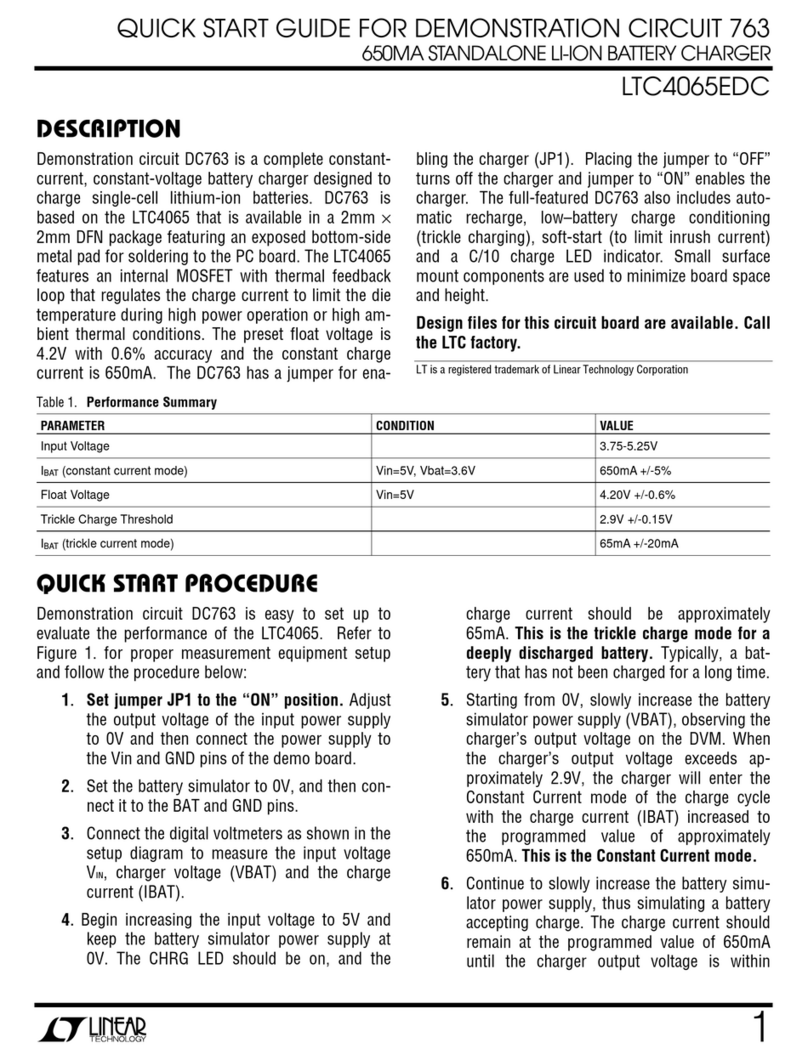
Linear Technology
Linear Technology DC763 Series User manual

Linear Technology
Linear Technology DC1229B User manual
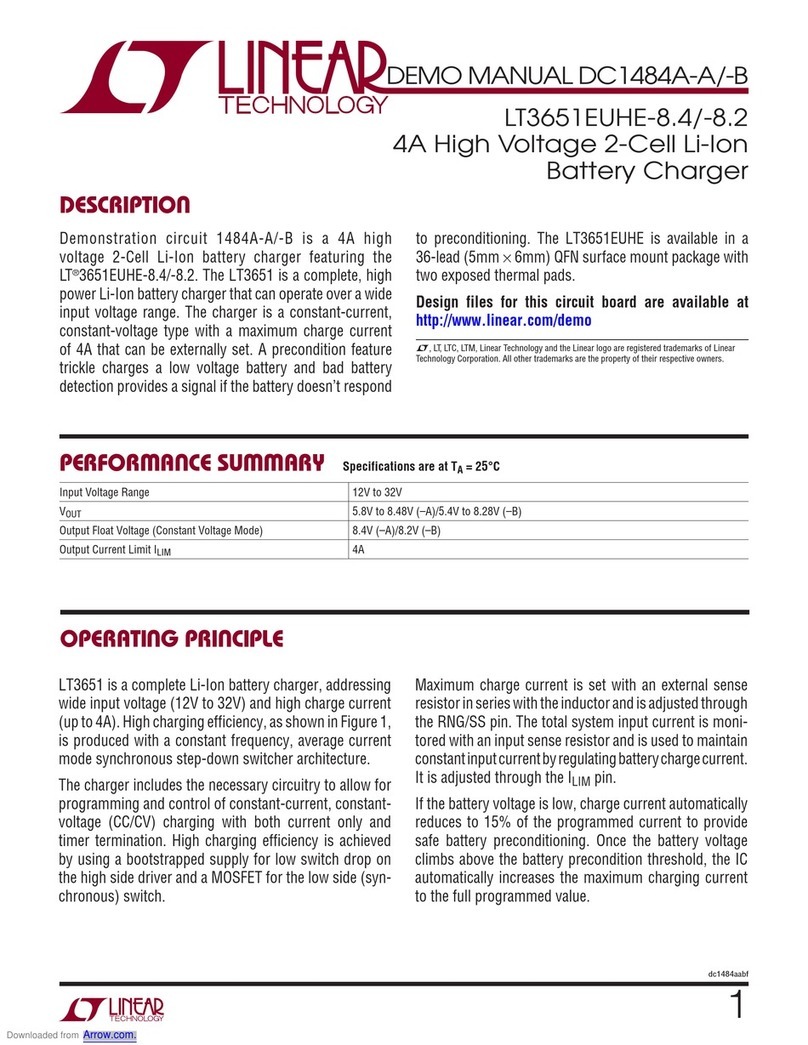
Linear Technology
Linear Technology DC1484A-A User manual

Linear Technology
Linear Technology LT3651EUHE-4.1 Quick setup guide
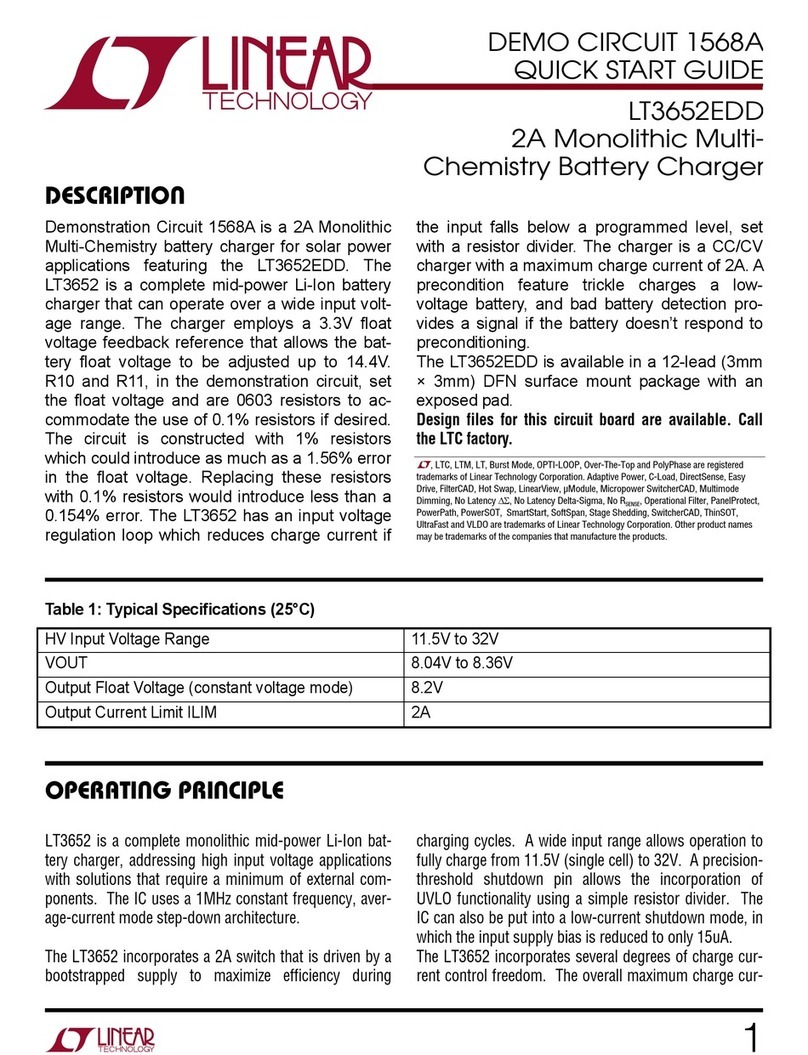
Linear Technology
Linear Technology LT3652EDD User manual
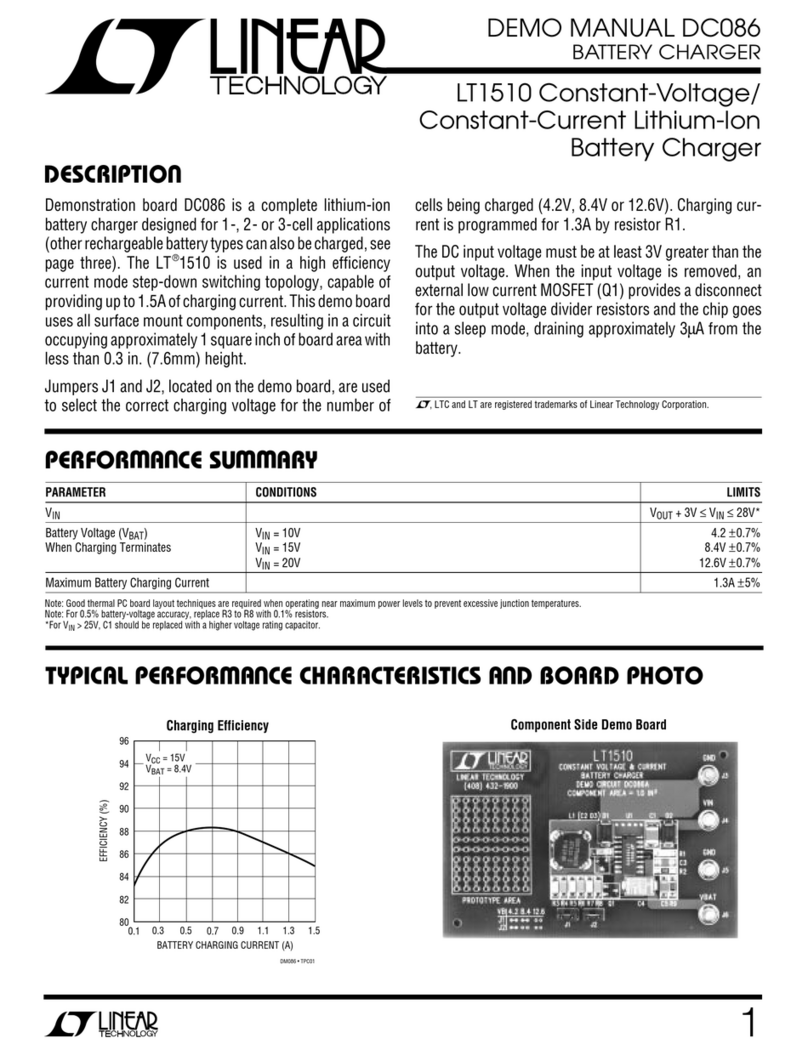
Linear Technology
Linear Technology DC086 Quick setup guide

Linear Technology
Linear Technology LTC1760 User manual

Linear Technology
Linear Technology DC2151A Quick setup guide
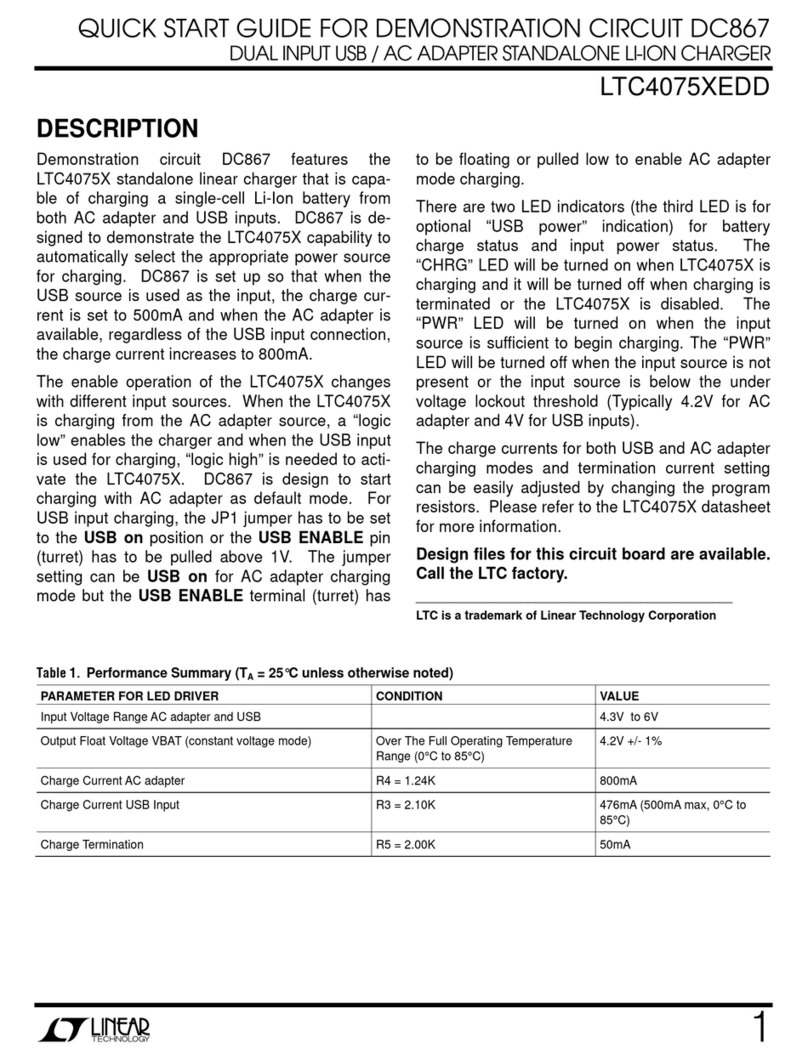
Linear Technology
Linear Technology LTC4075XEDD User manual
